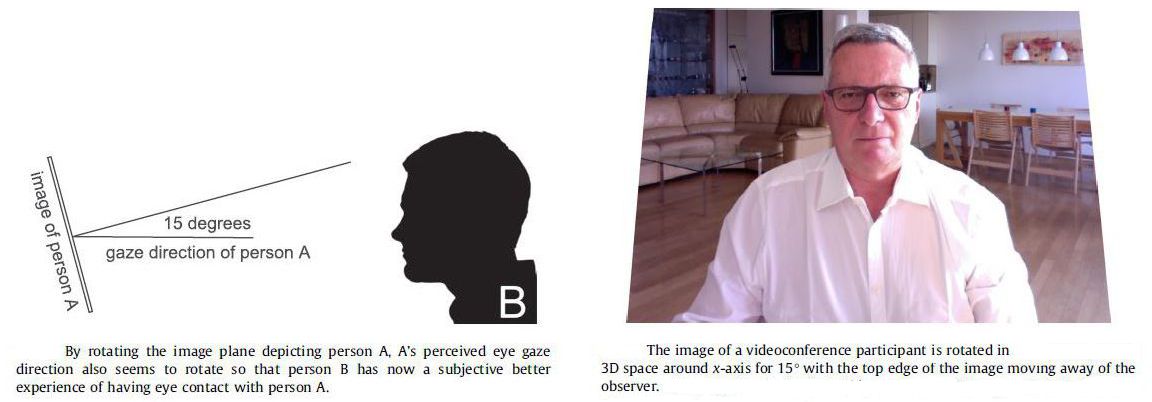One of the several driving forces behind the development of video conferencing technology was the desire to enable face-to-face communication between persons at physically separate locations. But something has been missing.
In recent years, video conferencing capability has become widely available through the PCs and smartphones used with free Internet services such as Skype and FaceTime. Despite these developments, video conferencing has not yet achieved a level of adoption commensurate with the full extent of its’ potential. One of the reasons for this situation has been the technical difficulty in establishing critically important, direct eye contact between video conferencing partners. This is due to the fact that the face capture camera is mounted above the display in most video conferencing systems.
The eye contact situation is illustrated in the figures below. Look carefully at the user’s eyes. Although the difference is subtle, people are generally able to determine with great accuracy if the person with whom they are conversing is looking back directly into their eyes.
Although the importance of establishing proper eye contact has been recognized for many years, a suitable hardware and/or software solution has not yet been developed.
A team of researchers headed by Aleš Jaklic? in the Faculty of Computer and Information Science at the University of Ljubljana (Ljubljana, Slovenia) has proposed a simple means to address the eye contact issue.
The most recent results reported by the team can be found in an article entitled “User interface for a better eye contact in videoconferencing.” It was published in Displays 46 (2017) 25-36. A copy of the article can be found here.
The starting point for the means developed by the researchers is the observation that “observer-related gaze direction is an additive combination of the observer-related head orientation and the looker-related gaze direction.” The team’s recent article goes on to provide a highly readable summary of the physiological and psychological aspects of human vision that effect the perception of gaze direction.
Based on their understanding of human vision, the researchers proposed addressing the gaze issue by rotating the image plane of the video conferencing partner around the x-axis. The situation is illustrated in the figure below. In the context of display technology, this rotation corresponds to simply tilting the plane of the display.

The researchers determined the extent to which this simple adjustment improved the perception of eye contact by performing three different experiments using a large group of test subjects. Although the results of these experiments are not entirely conclusive, the researchers believe that they demonstrated that the approach somehow “tricks the human visual perception system” into perceiving that there had been a change in the gaze direction of the video conferencing partners such that there was an improvement in the subjective experience of eye contact between the partners. -Arthur Berman
University of Ljubljana, Aleš Jaklic?, [email protected]

